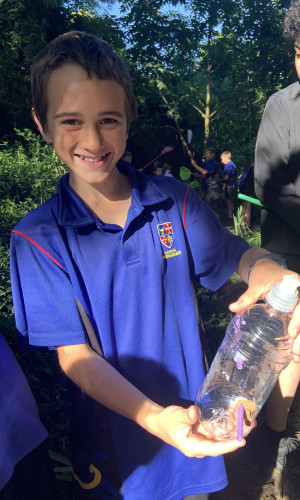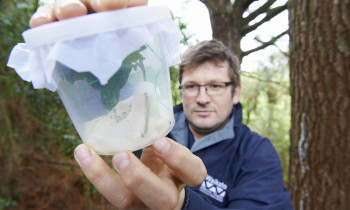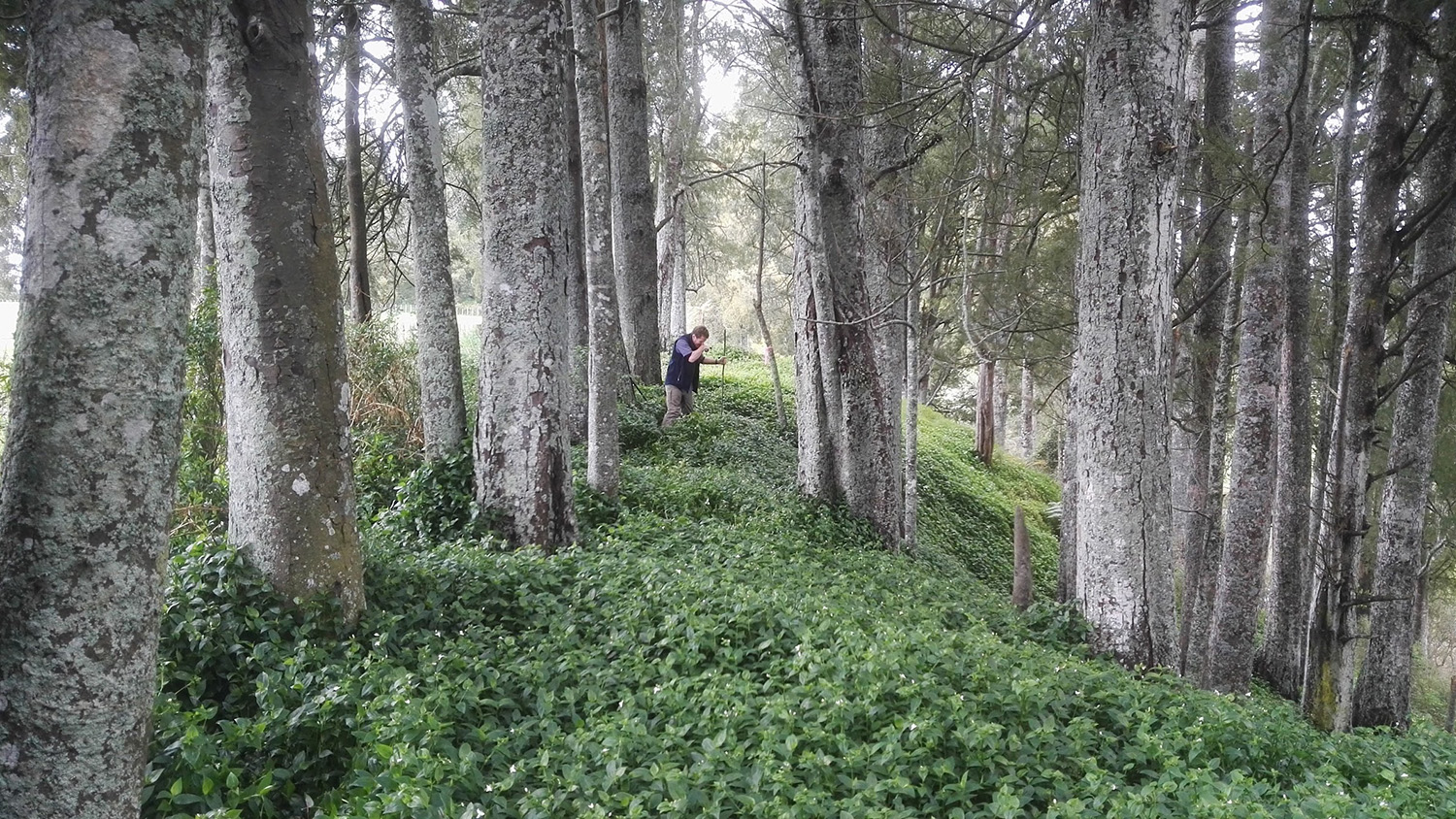“Tradescantia is very hard to get rid of and will overtake a forest floor so that nothing else can grow.”
- Hamish Hodgson, Waikato Regional Council Biosecurity Officer

Maeroa Intermediate students caught about 200 tradescantia beetles to give to a fellow Enviroschool in Taupō.
Biocontrol agents targeted at the widespread and environmentally damaging weed tradescantia are spreading well and naturally in the Waikato – and also with a bit of help from some keen Enviroschools.
At St Patrick’s Catholic School in Taupō, tradescantia forms a thick carpet in Brentwood Gully, making it impossible for young native seedlings to establish.
Kids Greening Taupō, which connects with schools to develop restoration projects, thought it was a good idea for St Patrick's students to explore biocontrol as tradescantia biocontrol agents were going really well in other parts of Aotearoa.
It just so happened that fellow Enviroschool Maeroa Intermediate, in Hamilton, had a great patch of tradescantia where beetles were thriving, so armed with nets and some ingenious home-made suction devices called ’pooters’, students from Maeroa Intermediate spent about two hours catching around 200 of the beetles to send to Taupō.
St Patrick’s also added another biological control agent to go with the beetles, the tradescantia yellow leaf spot fungus.
Tradescantia, also known as wandering willie, is a native of Argentina and Brazil. “It’s very hard to get rid of and will overtake a forest floor so that nothing else can grow,” says Hamish.
Since 2011, four biocontrol agents have been released in New Zealand to help control tradescantia: the leaf beetle (Neolema ogloblini) in 2011, the stem beetle (Lema basicostata) in 2012, the tip beetle (Neolema abbreviate) in 2013, and the tradescantia spot fungus in 2018.
There are now more than 120 known established sites of beetles and spot fungus in the Waikato region, 70 of which were release sites by Waikato Regional Council, Waikato District Council and QEII.
Waikato Regional Council biosecurity officer Hamish Hodgson says the leaf beetle and spot fungus appear to be the most successful of the four in their role as biocontrol agents.
“These two agents are now found throughout the northern part of the region, in Raglan, and throughout Hamilton, Coromandel and South of Cambridge, with significant damage recorded at a number of the sites.

Hamish Hodgson with tradescantia beetles for release.
“Manaaki Whenua has set up monitoring sites in Northland, Auckland and Waikato to test the effectiveness of the individual agents and in combination.”
The two schools are also monitoring the effectiveness of their fungus agent.
Enviroschools regional coordinator Michelle Daly says Enviroschools facilitators worked with small groups of students to set up a number of quadrats into which a handful of infected tradescantias was released to monitor the rate of the spot fungus’ spread. “The students visit the quadrats every three weeks to take photos and observe change,” says Michelle.
“They record their findings, taking into account the effects of temperature and rainfall.
“The project is a great hands-on learning opportunity. It’s been a big hit with both teachers and students alike, and we’re getting interest from other schools that want to do the same thing.”
Please click the links to find out more about tradescantia yellow spot fungus and tradescantia leaf beetle.

